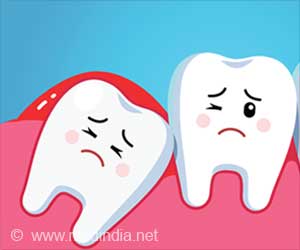A new screening system combining digital photography with Internet has proved to be a simple, cost-effective method to screen for a common childhood oral disease.
A new screening system combining digital photography with Internet has proved to be a simple, cost-effective method to screen for a common childhood oral disease that predominantly plagues America's inner city toddlers.
Early childhood dental caries (ECC), more commonly called as baby bottle tooth decay, results from prolonged exposure to sweetened juices, as seen in toddlers sleeping with a bottle, that results in extensive tooth decay. The condition is often overlooked by parents until the child complains of severe pain, and by the time interventions are sought, the condition would have progressed to the extent that the only option left would be extraction of the decayed tooth under sedation. The new screening system has been developed to aid in early intervention before the problems become severe.A specially outfitted digital camera is used to take photos of children's teeth by a Child Care Center health assistant. The photos are then sent electronically across town to pediatric dentists, who review the files in batches, identifying those toddlers with ECC. Dentists believe that this new screening system is the first of its kind, and will pave the way for earlier identification of the cavities before they become a painful problem for young toddlers – and a costly one for states across the country footing the bill for Medicaid. Estimates in the community of Rochester alone put treatment of ECC at $1 million annually, a tab picked up almost exclusively by Medicaid.
In a recent study published in the June issue of the Journal of Telemedicine & Telecare, University of Rochester Medical Center dentists documented how the new system showed that nearly 40 percent of 162 toddlers were suffering from baby bottle tooth decay. Most averaged about two cavities, but one child had as many as 20 decayed teeth.
"We have identified a very simple, cost-effective method to screen for this common childhood disease before it becomes a much larger problem," said Dorota Kopycka-Kedzierawski, D.D.S., assistant professor of Dentistry at the University of Rochester Medical Center, and author of the study. "By catching ECC at its earliest stage, we will effectively save the patient and parent toothache and heartache, decrease use of emergency room services, and increase the usage of dentists by this underserved population."
Typically found in children aged five and under, the practice of putting a baby to bed with a bottle, which the baby can suck on for hours, is the major cause of ECC. The sugary liquid flows over the baby's upper front teeth and dissolves the enamel, causing decay that can lead to infection and cavities. ECC is rampant in minority communities, where access to dental care is uncommon. National estimates put up to 25 percent of minority children aged 1-5 suffering with the painful and often disfiguring condition.
If caught early on, parental education, fluoride treatments and sealants can slow down the decay, allowing teeth to naturally fall out as the child ages. But when the disease progresses unchecked, invasive treatment is the only choice, including sedation and extraction of the tooth.
Advertisement
"Unfortunately, early childhood dental caries tends to occur in children who are not yet under the care of dentists, so there is no existing system of care that we can simply insert a screening exam into," Kopycka-Kedzierawski said. "When we saw the success being experienced by the Health-e-Access telemedicine network here in Rochester, we knew we had the potential for a very cost-effective and successful solution."
Advertisement
The pilot project proved two important things. First, the on-site health assistant at the child care center could be trained to take accurate photos of teeth, and second, the images were clear enough to diagnose ECC. In fact, the photos were better than "clear enough."
"The quality of the images was such that we could spot decay that was not visible to the human eye," Kopycka-Kedzierawski said. "And, we could use the photos to help educate the parents about the disease, and in some cases, gently prod them into seeking the care of a dentist."
These results helped pave the wave for the larger screening program, the subject of the article published in Journal of Telemedicine & Telecare. In total, 162 children from 1 to 5 years old in six Rochester inner-city child care centers were screened, with almost 40 percent shown to have ECC. Once identified, parents received a letter alerting them to their child's oral disease, and were provided with a referral so the problem could be treated.
Three months later, all children were rescreened to determine how many actually had actually seen a dentist to correct the problem. About 25 percent of children did receive dental services, though the sample size in this study is too small to make generalized conclusions. Now, researchers are focused on finding grants to help support follow-up efforts so that all toddlers identified with ECC will receive the much needed dental care.
Source: Eurekalert







